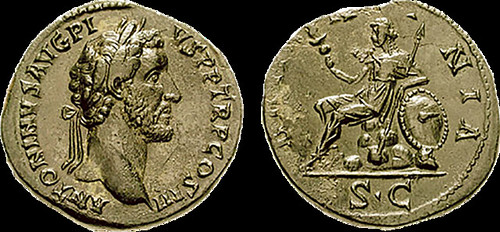
PREV ARTICLE
NEXT ARTICLE
FULL ISSUE
PREV FULL ISSUE
LADY LIBERTY AND U.S. COINAGE
Lou Golino published a nice article on Coin Update June 15, 2017 on Lady Liberty and U.S. coinage since colonial times. Here's an excerpt.
-Editor

Most Americans and others around the world are aware that the United States was founded on the ideal of liberty (or freedom) and typically associate the idea concretely with the Statue of Liberty in New York Harbor. The Statue of Liberty, a gift from France that began welcoming visitors in 1886, not only represents our enduring commitment to those ideals and our friendship with France but also serves as a symbol of the American melting pot. But many people likely have no idea about the historic roots of the idea of Liberty, or why it is usually depicted as a female in classical art and on much of U.S. coinage. Lady Liberty is an allegorical, or symbolic, representation of the democratic and republican ideal of freedom depicted as a female figure or goddess. The idea dates to ancient Greece and Rome, where she was known, respectively, as goddesses named Eleutheria, who appeared briefly on the coins of Alexandria, and Libertas, who was honored with temples and statues built in her honor as well as on coinage. Lady Liberty is by far the most frequently used American numismatic motif and “has been an integral part of U.S. numismatic art” since the time of the original 13 colonies, according to Cornelius Vermeule’s Numismatic Art in America. And the classic American Lady Liberty designs remain highly popular with most collectors, especially older ones, which is why the U.S. Mint continues to issue coins that reuse those designs.
British and French influences In fact, some of the Lady Liberty designs that have appeared on U.S. coinage were strongly influenced by French and British antecedents—especially Britannia, which dates to Roman times. Colonial coinage, for instance, included many designs that clearly were inspired by Britannia coins on which the goddess Liberty was shown seated.

This Roman coin from 143–144 AD features an obverse with a bust of Antoninus Pius and carries a reverse with an image of Britannia seated left on a heap of rocks. Britannia, the Greek and Roman term for Britain and the female personification of Britain on art and coinage since Roman times, influenced both colonial and 18th- and 19th-century U.S. coin designs
To read the complete article, see:
The Numismatic Bibliomania Society is a non-profit organization promoting numismatic literature. See our web site at coinbooks.org. To submit items for publication in The E-Sylum, write to the Editor at this address: whomren@gmail.com To subscribe go to: https://my.binhost.com/lists/listinfo/esylum All Rights Reserved. NBS Home Page Contact the NBS webmaster 
|